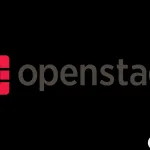
IBM introduces IBM Quantum Heron & IBM Quantum System Two

At the IBM Quantum Summit in New York, IBM introduced ‘IBM Quantum Heron,’ the initial release in a fresh line of large-scale quantum processors. Developed over four years, this architecture sets new benchmarks in performance and error rates for IBM’s quantum processors. Additionally, IBM revealed the IBM Quantum System Two. This marks their first modular quantum computer and a key part of their quantum-centric supercomputing strategy. The system, located in Yorktown Heights, New York, is now operational with three IBM Heron processors and control electronics.
IBM has shown the power of its Quantum systems, such as the IBM Quantum Eagle. These systems excel in tackling complex scientific challenges in chemistry and physics, surpassing classical simulation capabilities. Since then, leading experts from various organizations have further explored the potential of these systems for advanced computing tasks. IBM is now offering access to its new IBM Quantum Heron 133-qubit processor, with enhanced performance and lower error rates, opening up new possibilities for users in the cloud. Additionally, more of these processors will join IBM’s fleet of systems in the coming year.
IBM Quantum System Two forms the core of IBM’s advanced quantum computing structure. It merges cryogenic infrastructure, runtime servers, and qubit control electronics. It’s a cornerstone of their quantum supercomputing strategy, combining classical and quantum computing with a middleware layer for seamless integration. Moreover, IBM intends to host future quantum processors within this system. This gradual enhancement of capabilities over time aligns with their extended roadmap for quantum development.
IBM is rolling out plans for a new software stack, centering on Qiskit 1.0 for stability and speed. They’re introducing Qiskit Patterns to simplify quantum code creation, enabling developers to map classical problems to quantum circuits, execute them using Qiskit Runtime, and process the results. Combined with Quantum Serverless, this allows users to create and run workflows integrating classical and quantum computation in various environments. IBM also aims to use generative AI in quantum code programming through Watsonx, their enterprise AI platform, using IBM Granite models to automate code development. Furthermore, with enhanced hardware and user-friendly software like Qiskit, users can leverage quantum systems more effectively for complex problems.













